|
Home
> All Guitars >
JET Guitars >
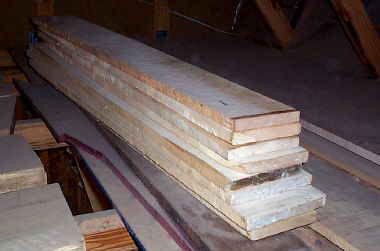 |
Jeff T. uses hard maple for necks because of it's strength.
It gives a
nice bright attack to the sound of a guitar. Jeff has achieved sound
quality with these guitars that is second to none.
In my opinion Jeff Terwilliger is the most talented & Innovative
Luthier on this planet.
A JET Guitar even the new 2011 economy models defy the normal logic
most builders use to build a good guitar.
The maple is seasoned
to 9% moisture content before cutting.
A Supreme Earlewood has a
three piece flamed laminated neck with an integral 12 degree tilted
headstock. |
|
Jeff likes to lay out and cut about 30 laminate
pieces at a time, so that wood from different boards can be mixed
and the grain can be carefully matched for strength in the resulting
batch of 10 necks. These boards have been carefully face planed for
joining quartersawn pieces.
Everything is completely hand made |
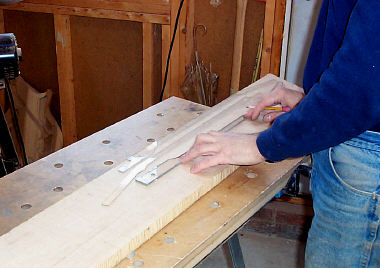 |
|
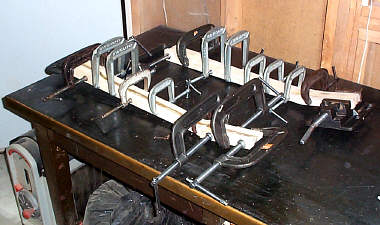 |
After band sawing the pieces, the necks are
assembled and glued. Polyurethane glue, the strongest wood glue
available, is allowed to cure for 24 hours.
Again There Are No CNC machines used in this process. Even the
new lower cost versions are still single craftsman built beautiful
guitars. |
|
A standard Earlewood will
have figuring in the neck; either highly flamed maple in the center
or outer pieces, or gentle figuring throughout. An upgrade option is
high flaming or birdseye in all three pieces.
|
|
 |
This view shows a typical neck blank with the
quartersawn grain symmetrically aligned for stability and strength.
Notice the different color of the hard maple from different boards.
This process originally made popular by the people at Hamer many
years ago makes these necks incredibly strong.
You won't find corporate guitars built this way. |
|
An ingenious time saving jig ready for action:
The JET guitar neck carving setup. The blank is screwed to a set of
precisely made blocks that can rotate the back of the neck over a
dado blade on a table saw. By careful stepwise movement, a round
neck taper can be rough carved in a straight line. |
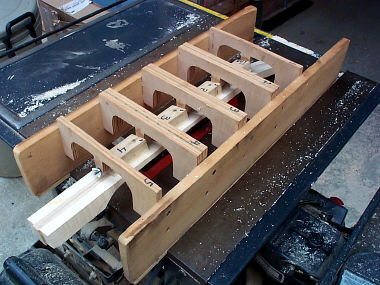 |
|
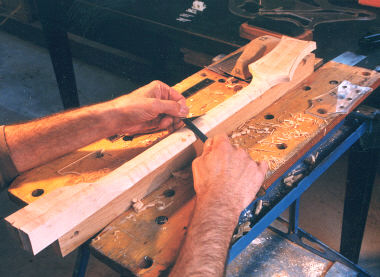 |
The final shape and thickness of the neck is
finished by Jeff himself. The eight small screw holes used in the neck
carving jig and in this holding fixture will be routed away by the
truss rod channel. It doesn't get any better than
this.. In fact we don't even do that in our shop. Ed
Roman |
|
This photo shows various necks, some with truss
rods installed and the maple strip glued in. The top surface will be
trimmed to accept the fingerboards, which are glued on with epoxy
instead of wood glue. That's because of the high oil content of the
ebony. |
 |
|
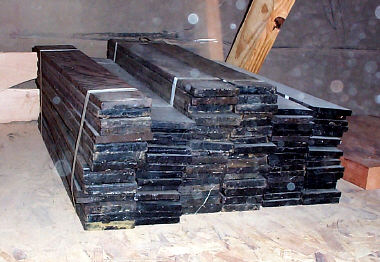 |
About 120 ebony fingerboard blanks, patiently
waiting their turn to be used in a JET guitar.
Jeff has an ebony supplier that gets him some of the finest ebony we
have seen. The tone of the JET guitars is evident in the
quality of the wood used throughout. |
|
The lucky fingerboard selected to be next is
first planed to 5/16" thickness, then hand carved to produce the
famous JET compound radius.
The only other ways to produce a
compound radius is with a CNC machine, or a conical sanding jig the
size of a small mortar mixer."I might consider that...!" says
Jeff |
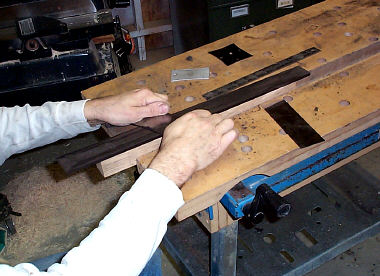 |
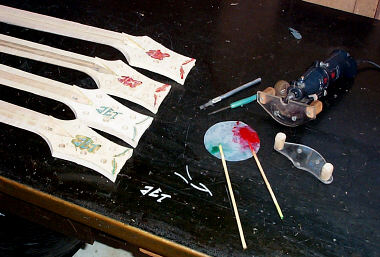 |
A compact rotary tool with custom made bases,
along with an assortment of tiny chisels, are the tools used to rout
inlays. Inlays are glued and clamped using tinted epoxy, to match
the final color. This is why the color of a JET guitar is determined
early in the crafting process. |
|
Here are some completed necks with the flame
maple binding strips glued in and sanded. They are ready for
fretting and finishing.
Flame Maple binding is not normally used by other guitar builders.
It is much more expensive than ivoroid or plastic. It is also
harder to do. |
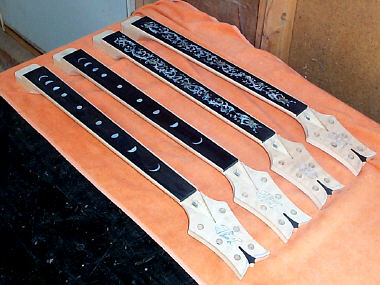 |
|